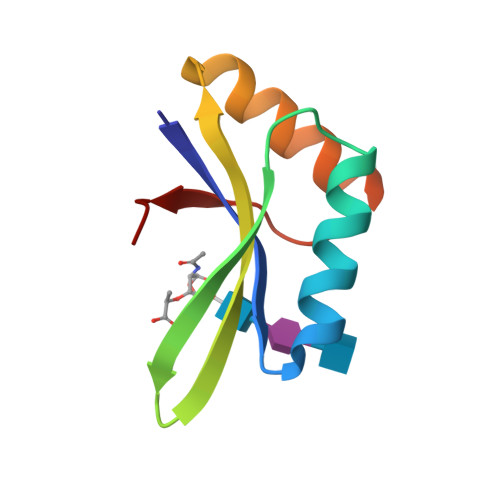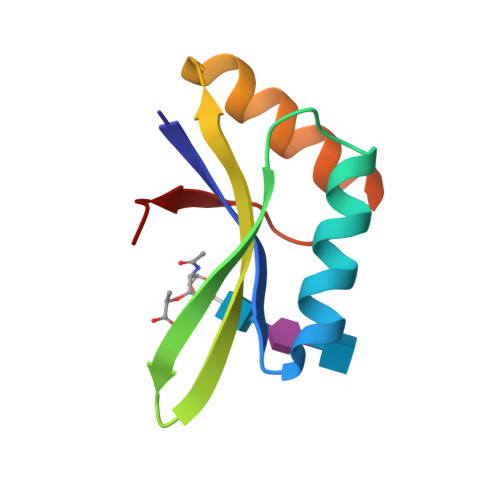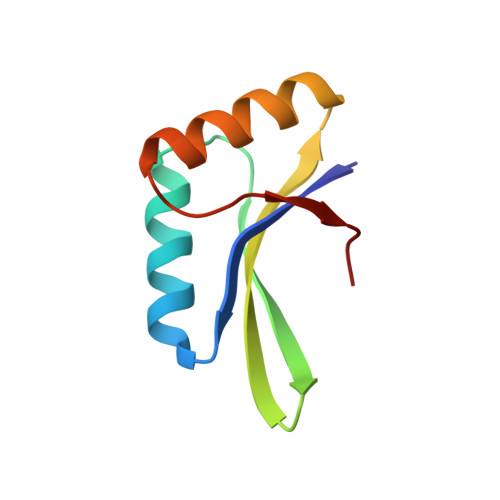Structural basis of denuded glycan recognition by SPOR domains in bacterial cell division.
Alcorlo, M., Dik, D.A., De Benedetti, S., Mahasenan, K.V., Lee, M., Dominguez-Gil, T., Hesek, D., Lastochkin, E., Lopez, D., Boggess, B., Mobashery, S., Hermoso, J.A.(2019) Nat Commun 10: 5567-5567
- PubMed: 31804467
- DOI: https://doi.org/10.1038/s41467-019-13354-4
- Primary Citation of Related Structures:
6I05, 6I09, 6I0A, 6I0N - PubMed Abstract:
SPOR domains are widely present in bacterial proteins that recognize cell-wall peptidoglycan strands stripped of the peptide stems. This type of peptidoglycan is enriched in the septal ring as a product of catalysis by cell-wall amidases that participate in the separation of daughter cells during cell division. Here, we document binding of synthetic denuded glycan ligands to the SPOR domain of the lytic transglycosylase RlpA from Pseudomonas aeruginosa (SPOR-RlpA) by mass spectrometry and structural analyses, and demonstrate that indeed the presence of peptide stems in the peptidoglycan abrogates binding. The crystal structures of the SPOR domain, in the apo state and in complex with different synthetic glycan ligands, provide insights into the molecular basis for recognition and delineate a conserved pattern in other SPOR domains. The biological and structural observations presented here are followed up by molecular-dynamics simulations and by exploration of the effect on binding of distinct peptidoglycan modifications.
Organizational Affiliation:
Department of Crystallography and Structural Biology, Instituto de Química-Física "Rocasolano", Consejo Superior de Investigaciones Científicas, Madrid, Spain.


















